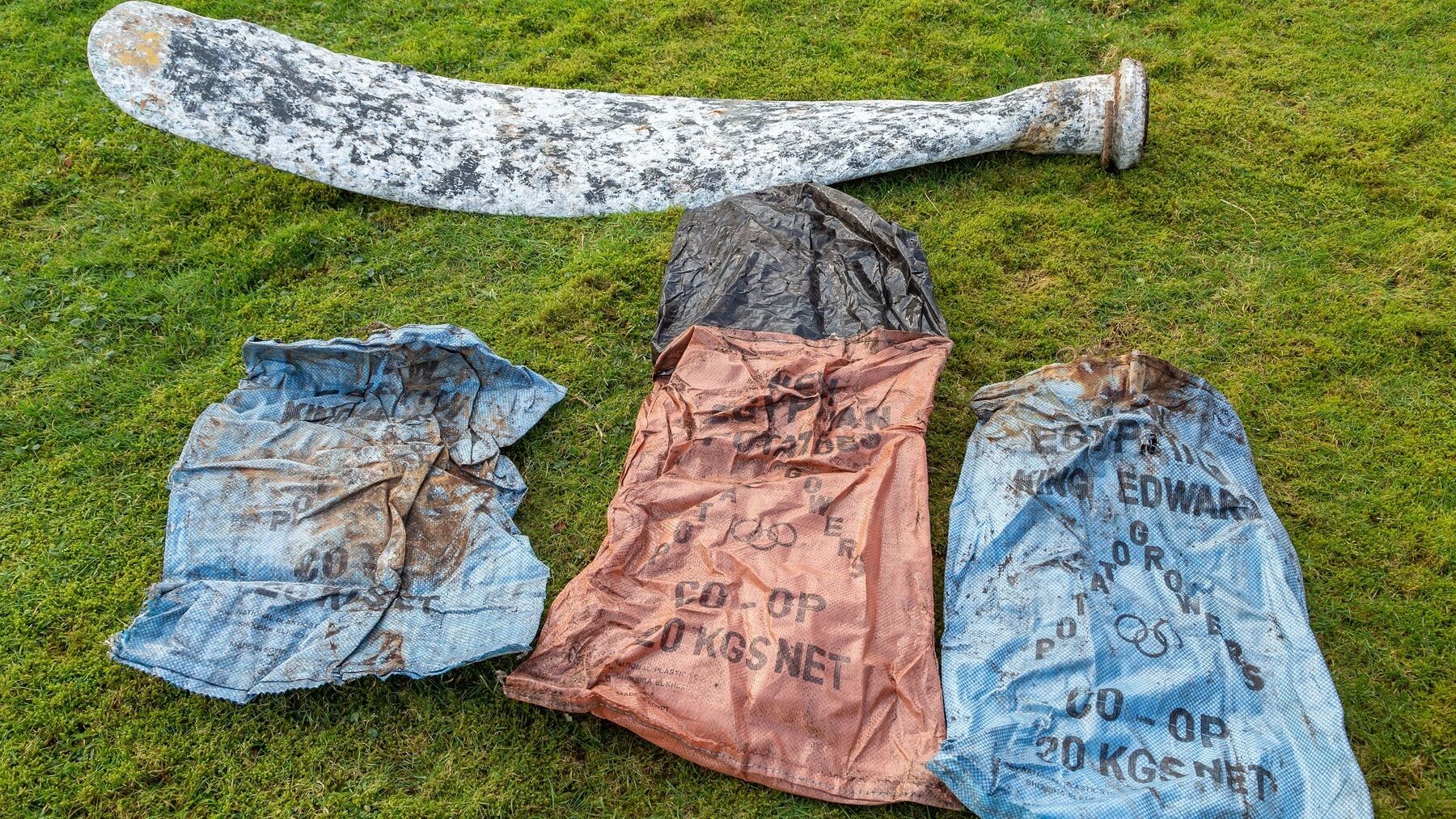A propeller blade thought to be from a Second World War aircraft has been discovered on the Isle of Arran.
A contractor working for the National Trust for Scotland (NTS) discovered the propellor blade wrapped in potato sacks in an isolated location in Coire a’ Bhradain while conducting peatland restoration.
There are believed to be as many as sixteen Second World War crash sites on Arran and the sea around the island, three of which are recorded close to where the propeller was found.
On 20 August 1943, a Consolidated B-24D Liberator flying from Newfoundland to Prestwick Airport flew into Beinn Nuis in low cloud. All ten crew members onboard were killed.
On 30 September 1943, a Lockheed C-60A Lodestar 42-56014 of the 17th Ferrying Group, USAAF, flew into Beinn Nuis during bad weather while en route from Prestwick Airport to Stornoway on the Isle of Lewis. All seven crew were killed.
On 10 December 1944, a B-17G of the 560th Bombardment Squadron, 388th Bombardment Group flew into Beinn Nuis in low cloud while en route from Knettishall in Suffolk to Prestwick Airport killing all 11 crew members.
Derek Alexander, Head of Archaeology at NTS, said: “We are intrigued by the discovery of the propeller blade, which certainly looks to be from a WWII plane. There are two previously known plane crash sites further up the glen on the steep cliff side of Beinn Nuis, but this object was found outside the mapped spread of debris from both of these, which has caused some uncertainty about which aircraft they belong to.”
“The plane part was discovered when our contractor’s excavator bucket hit something solid and metallic. On closer inspection, we found it had been wrapped and tied in a potato sack, which added further intrigue to the find that lay some distance from the spread of the wreckage of the former crash sites. It may have been gathered during the clean-up of the site in the 1940s, immediately after the impact, or through subsequent work by the Trust in the 1980s. It’s too early to tell, but we are determined to get to the bottom of it.”
“We know from a previous archaeological survey carried out by Dr. Terence Christian around the crash sites back in 2013 the extent of the debris fields, so we know there is historical merit to the findings; we just have to work out which plane the part came from to piece the story together. There have been six WWII plane crashes on Trust-owned land on Arran, which are now protected sites, so we have to work with the relevant organisations and follow procedures, such as informing the Military Crash Register, before any further work can be carried out.”
“The crash sites on the island have been well documented by Arran Museum, which has an informative display about the WWII aircraft involved, so we can narrow down the types of plane to a B17 Flying Fortress or a B24 Liberator, but both use the same sort of propeller blades, which adds to the confusion. From Dr Christian’s survey work in 2013, we know that the closest of the two sites to where the propeller blade was found is the B24 Liberator, which crashed on 24 August 1943 with the loss of all eleven crew and passengers. The bodies were recovered from the crash site shortly after, but the locations are still protected today under the 1986 Protection of Military Remains Act.”
“We are not permitted to remove wreckage from such sites without first obtaining permission – so the accidental discovery of a propeller blade, out with the known spread of fuselage debris, that had obviously been previously moved is quite an unusual situation. We are working with an aviation and aircraft expert to identify the objects, and there is potential to match up the serial numbers of the parts to historical records held by the Military. This will help us get closer to the origin of this fascinating discovery, continue to share these stories, and remember those who lost their lives.”

